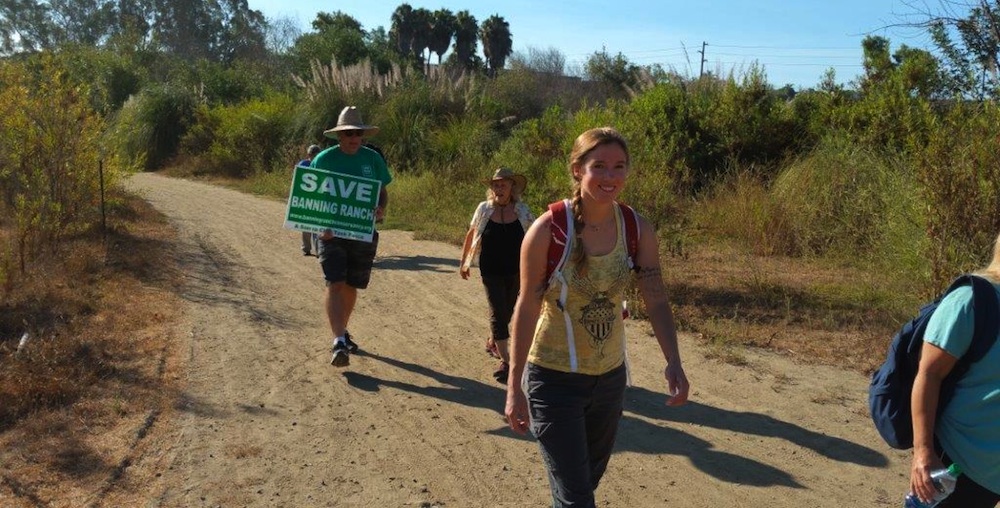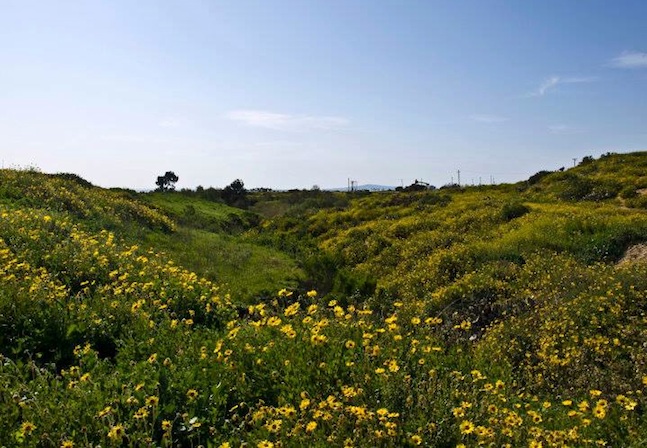Updated June 7th, 2021
Banning Ranch is located within a special designation area of the Coastal Zone of California. 400 acres located in Orange County and within the sphere of influence of Newport Beach, and bordering Costa Mesa and Huntington Beach where the Santa Ana River meets the Pacific Ocean.Banning Ranch, privately owned, is adjacent to several parks, preserves and open spaces that make up nearly 100 acres of open spaces collectively callOrange Coast River Park (
www.ocriverpark.org)
After decades of Sierra Club activist involvement, Banning Ranch is in escrow to be acquired and preserved. However, Banning Ranch is a classic example of a “brownfield”, which is land formerly used for industrial purposes like oil and gas extraction and now no longer used for that purpose. When being repurposed, the question is what is the best community use in the repurposing strategy. Often this means choosing another industrial use, housing or environmental preservation. Infilling brownfields with housing can relieve pressure to build housing on undeveloped land that has environmental value, and the Sierra Club sometimes recognizes this trade. However, sometimes the brownfield has large swaths of valuable habitats and this makes the brownfield worthy of efforts to acquire and preserve. This was the case related to Banning Ranch.
Banning Ranch has four geographic regions: half of Banning Ranch is made up of about 200 acres of degrades wetlands adjacent to wetlands being restored by the US Army Corp of Engineers, OC Flood Control and the non-profit, Huntington Beach Wetlands Conservancy. The other half is made of Coastal Bluffs, Arroyos and Mesa grasslands.
The lower and upper mesa areas had about 450 oil wells operating at one point or another during the past 50 years. Typical of an oil and gas operation, a well would be drilled and operated until the cost of maintaining the well was less profitable than simply drilling a new well and abandoning the old. California has rules on abandoning wells and there is an agency called the Division of Oil, Gas and Geothermal Resources (DOGGR) to enforce those rules.
One of the environmental benefits of running an oil and gas operation on 400 acres of private land over 50 years is that the public cannot visit and the operational impacts are in concise geographic areas - basically roads or paths to well sites scattered across the property leaving acres and acres of land virtually untouched and evolving into a kind of ecological preserve of native plants, species and habitats.
California holds the land owners and mineral leaseholders responsible for cleaning up any environmental impacts related to their operations. Many Sierra Club activists spend time observing and monitoring the drilling and retirement of wells to make sure this is true. This means that as the oil operations abandoned wells, they often complied with state laws and the contamination and environmental harm from operations are not as bad as many in the public worry about. Of course, some clean up is needed. It is needed on any brownfield site, but some sites are worse than others. Banning Ranch has many options that will allow for clean up without destroying environmentally sensitive habitats. Thus, due to the requirements of state law, oversight of DOGGR and involvement of Sierra Club members and other environmentalists the land will be cleaned prior to public use as part of the acquisition.
Improved technology can often lead to the availability of brownfields, and this is the case of Banning Ranch. Even after preservation, Banning Ranch will continue to have active oil operations, but technology now allows the oil operator to claim more oil from under the ocean from only 17 acres rather than 400 acres. The oil operations of Banning Ranch are designed to collect a thick crude oil that is used for asphalt on streets and roofing tiles. This type of crude oil is too thick to move by pipes, so it is trucks to the processing areas. The City of Newport Beach also has some oil wells adjacent to the Banning Ranch property involved with the same type of oil operations.
Although there are many ESHA areas of Banning Ranch, the disurbed areas will need special attention. The initial plants that colonize disurbed areas are called ruderal. Ruderal species can be invasive or native species and conservationists need to have a plan to encourage native ruderal species to colonize first and give rise to larger more established native plants habitats hosting a collection of native species of plants and animals. After the acquisition of Banning Ranch in 2022, this will be the next focus. How do we balance the land use of open space to meet the needs of native species balances with the dense populations of people living nearby who need some access and exposure to open spaces for their enjoyment and sanity.
Nearly 20 years ago, developer Taylor Woodrow proposed a development of nearly 2,000 residential units on a 200 acres of coastal mesa of 410 acres span of coastal open space near Newport Beach called Banning Ranch. Sierra Club volunteers petitioned the Angeles Chapter to form the Banning Ranch Task Force to evaluate the project and fight any violations of the Coastal Act. After Taylor Woodrow dropped the project, a large development fund from the East Coast, Cherokee, purchased the land and proposed another development project.
For more than a decade volunteers of the Banning Ranch park & Preserve Task Force with the backing of the resources of the Chapter, fought to make sure that all laws were followed on the local and state level. Their efforts paid off.
Lessons learned
Passion alone is not enough to save open space. Open space is preserved by actions, which included:
1. a careful review of the proposed development with careful comparison to what the law allows; and
2. motivating volunteers to take action by signing petitions and showing up to hearings for public comments. Each volunteer does not have to speak, but they do need to be present to hold signs or wear a supportive T-shirt.
Earlier this year, the Coastal Commission denied developers a permit to build at Banning Ranch, citing rare habitats and ecosystems that state law protected. in late November, the City of Newport Beach voted to remove entitlements to the land for development to comply with a State Supreme Court ruling.
What happens next
Now, Banning Ranch is preserved for years to come. The potential for it becoming public open space has increased. That's because without entitlements, a developer is more likely to consider acquisition by an environmental non-governmental organization.
The Sierra Club conservation efforts will continue regarding Banning Ranch. Volunteers are following other issues at the site, such as oil well consolidations and cleanup of brownfield contamination. Volunteers will also monitor the sensitive habitats to make sure that they continue to thrive and make sure no unlawful damage befalls them.
Do you have special habitats that need protection, preservation or restoration? Become active with the Angeles Conservation Committee. The committee meets in Orange County and L.A. counties, and has activists to help you organize, develop an action plan, findraising plan and secure training and resources you need to be successful. Contact Chapter Conservation Program Manager Angelica Gonzalez at (213) 514-5802 or email angelica.gonzalez@sierraclub.org.

